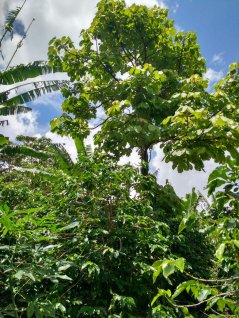
News
Planting trees on coffee fields and plantations can protect coffee plants from climate change
Agroforestry in coffee fields, which means growing coffee under the shadow of trees, could contribute to the conservation of coffee plantations whose existence is under threat from climate change. This is demonstrated by model calculations conducted by Wageningen University & Research (WUR) and the Federal University of Viçosa (Brazil) for Zona de Mata, a key coffee region in Brazil.
Over 1,5 billion cups of coffee are consumed worldwide each day. Will we still drink coffee in the future, and will coffee remain affordable? Maybe. But not without adjusting coffee farms to climate change: while the demand for coffee increases, the coffee plant, and the Arabica species in particular, is under threat from climate change.
Uncertainty
Coffee is of crucial importance to the livelihood of millions of small-scale farmers. The rising temperatures diminish the area suited to growing Arabica coffee. Estimates show that, based on the current climate scenarios, the areas suited to cultivating coffee will have shrunk by half in 2050. Furthermore, uncertain conditions, such as severe precipitation or drought, make harvests uncertain.

Protection
Combining coffee farming with trees that provide shade, cooling and protection from extreme rainfall while still allowing sufficient light to pass through, could significantly increase the resilience of the coffee production system against these changing circumstances. In his thesis, PhD candidate Lucas de Carvalho Gomes states that model calculations show that sixty per cent of the current acreage used for coffee production in the Zona de Mata (Brazil) will be lost by 2050.
However, when farmers switch to coffee cultivation under shade where half of the soil receives shade, it reduces mean temperatures and 75 per cent of the area maintains suitable for coffee production in 2050. This improvement of the microclimate applies in particular to fields located at an altitude of 600 to 800 metres. The tree species Aegiphila sellowiana, Inga spp., Sena macranthera and Persea americana (avocado) are among the tree species suited to provide shade.
Agro-ecological expertise
‘These results show that we must reconsider the current model of coffee production. Agroforestry in coffee fields has many advantages, but also requires agro-ecological expertise by farmers and scientists’, says co-supervisor Felix Bianchi, associate professor at the Plant Sciences Department of WUR.
Lucas de Carvalho Gomes research results are to be published in the June edition of Science Direct and are already available online. De Carvalho Gomes defended his thesis on Tuesday, 26 May.